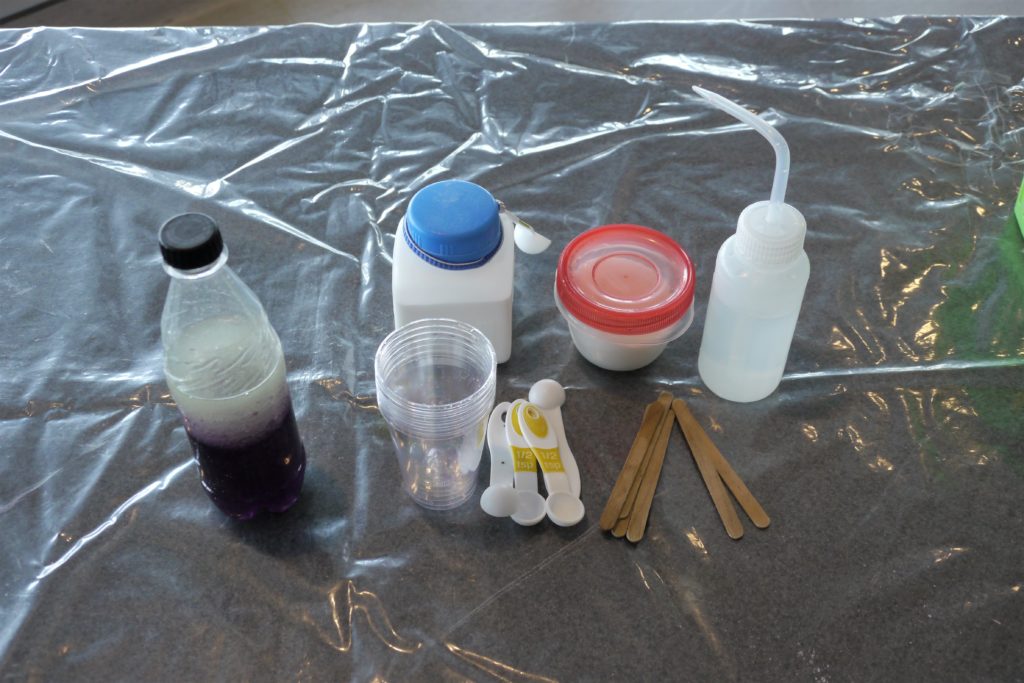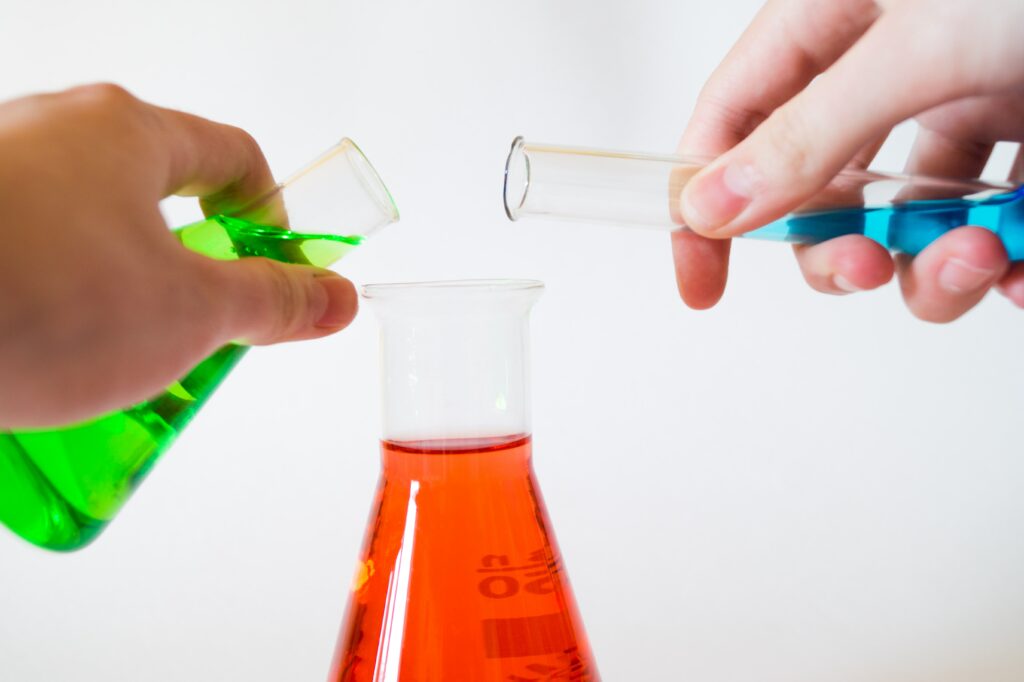Students make their own chewing gum and observe a polymerization reaction. They will explore the special properties of their chewing gum polymer, and the effect of heat on the polymer.
Polymers are chemical compounds with molecules bonded together in long, repeating monomer chains. Because of their structure, polymers have unique properties that can be tailored for different uses.
Polymers are both man-made and naturally occurring.
Rubber, for example, is a natural polymeric material that has been used for thousands of years. It has excellent elastic qualities, the result of a molecular polymer chain created by nature. Man made synthetic polymers can be pliable, while others are permanently rigid. Still others have rubber-like properties or resemble plant or animal fibers. These materials are found in all sorts of products, from swimsuits to cooking pans.
Synthetic polymer polyvinyl acetate is regularly used in chewing gum bases along with elastomers, fats, waxes and emulsifiers. It makes up almost 60% of the gum base and is preferred by many manufacturers because it is readily available, has strong chewing properties and improves film formation
Chewing gum is a soft, cohesive substance designed in order to be chewed without being swallowed. Modern chewing gum is composed of gum base, sweeteners, softeners/plasticizers, flavors, colors, and, typically, a hard or powdered coating. Synthetic polymer polyvinyl acetate is regularly used in chewing gum bases, it makes up almost 60% of the gum base.
Chewing gum texture is reminiscent of rubber because of the physical-chemical properties of its polymer, plasticizer, and resin components, which contribute to its elastic-plastic, sticky, chewy characteristics.


